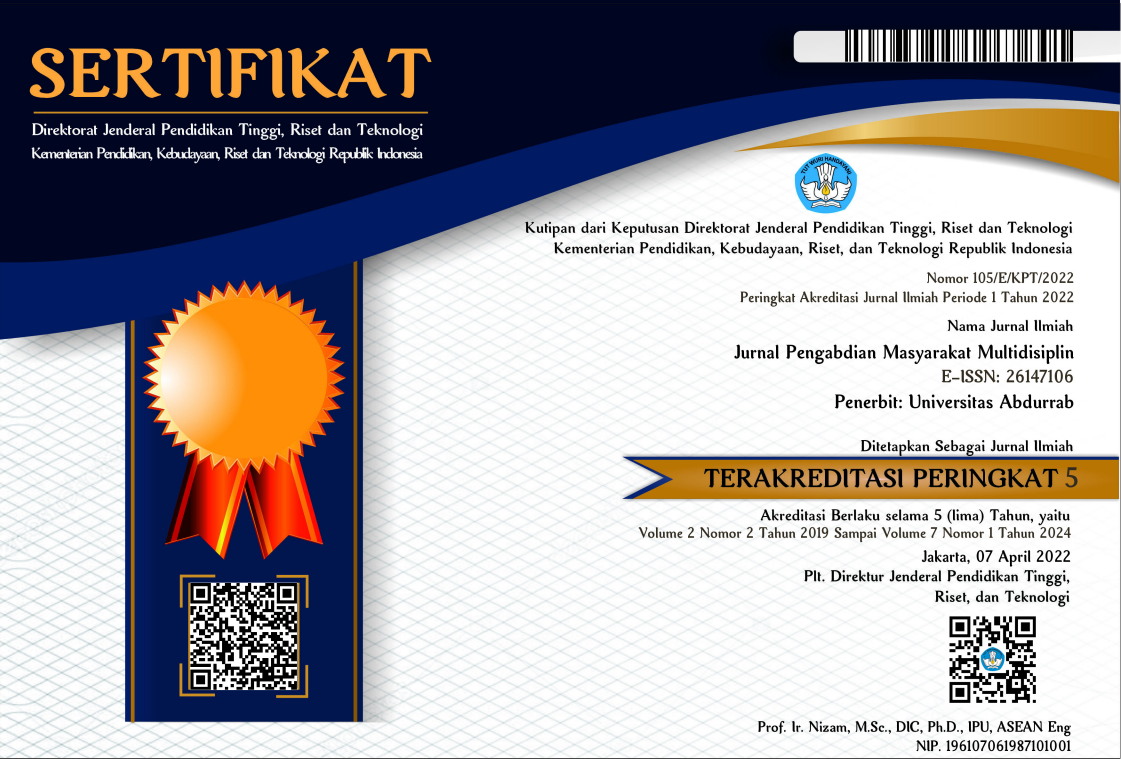PENYULUHAN PERBAIKAN KERUSAKAN LANTAI DENGAN MORTAR EPOXY
DOI:
https://doi.org/10.36341/jpm.v8i1.5238Keywords:
floor, damage, mortar, epoxyAbstract
Floor damage such as rough, cracked, broken, holes and wavy can disturb aesthetics, discomfort and increase the potential risk of accidents. Floor damage cause expansion and contraction, unstable foundations, inappropriate material selection, excessive loads and natural disasters, such as earthquakes. CV Cecak Construction is a company of civil engineering, construction and architecture. Because it operates in construction, the workforce, must have expertise to install and repair floors. This service activity, we can provide solutions to partners by providing and education about repairing floor damage using the innovative epoxy mortar method. Epoxy mortar is a polymer-based binding paste consisting of ingredients such as epoxy resin, solvents, binders, mineral fillers and some additives. Epoxy mortar functions to fill cracks because it can fill gaps in material cracks thereby preventing further damage, coating the concrete floor with a sturdy layer thereby reducing the brittle nature of the concrete. The aim this community service to provide knowledge and skills in repairing floor damage using the innovative method of applying epoxy mortar. Results of this program that CV Cecak Construction partners have increased knowledge and to repair damage to construction floors. Application of epoxy mortar to repair floor damage to partners (craftsmen and workers) without dismantling a recommendation for this program.
Downloads
Downloads
Published
How to Cite
Issue
Section
License
1. Copyright of all journal manuscripts is held by the Jurnal Pengabdian Masyarakat Multidisiplin.Formal legal provisions to access digital articles of electronic journal are subject to the provision of the Creative
2. Commons Attribution-ShareAlike license (CC BY-NC-SA), which means that Jurnal Pengabdian Masyarakat Multidisiplin is rightful to keep, transfer media/format, manage in the form of databases, maintain, and
3. publish articles.Published manuscripts both printed and electronic are open access for educational, research, and library purposes. Additionally, the editorial board is not responsible for any violations of copyright law.
licensed under a Creative Commons Attribution-ShareAlike 4.0 International License.







